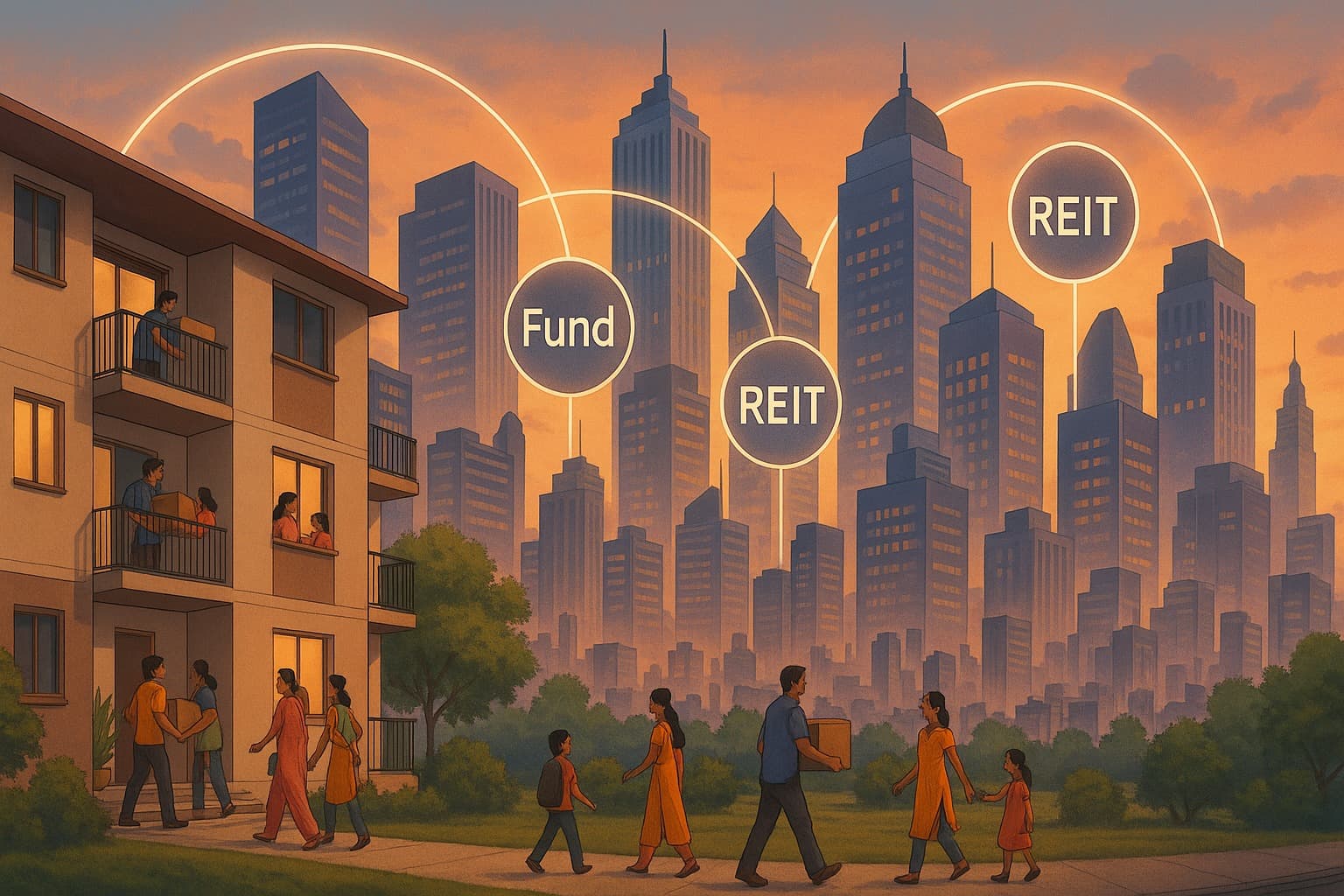Institutional vs Retail Investors in Indian Real Estate: Two Sides of the Same Coin
Summary
Indian real estate features retail investors (homebuyers) driven by emotion and institutional investors (funds) driven by data. They complement each other, with retail fueling housing and institutions funding commercial projects, shaping India's property market together.

Two Kinds of Players, One Big Market
Walk down any Indian street and you’ll see how real estate means different things to different people. For a young couple checking out under-construction flats, it’s about securing a future. For a corporate fund manager flying in from Singapore, it’s about spreadsheets, ROI, and quarterly reports. Both are looking at the same market, but their lenses couldn’t be more different.
This divide between retail investors (ordinary people like you and me) and institutional investors (big funds, banks, and REITs) is what shapes India’s property story. And honestly, it’s fascinating to see how these two worlds overlap, clash, and sometimes even complement each other.
Ravi, The Everyday Investor
Picture Ravi, a 35-year-old IT professional in Pune. He’s been saving for years, cutting down on vacations, skipping fancy gadgets, and finally, he and his wife book a 2BHK in a growing neighborhood. For Ravi, this isn’t just an investment — it’s safety, pride, and hope for the future.
This is what retail investors look like. They are the heartbeat of India’s housing market. They don’t buy dozens of apartments; they buy one. They don’t think in crores; they think in EMIs. Their decisions are shaped by emotions, family opinions, and a vision of stability.
The Big Guns: Institutional Investors
Now imagine a private equity fund sitting in Mumbai or New York. Their team isn’t touring sample flats with family; they’re analyzing multi-crore office parks, malls, or logistics hubs. They’re asking: “Will this asset give us a steady 10–12% annual return?”
Institutional investors are cold, calculated, and professional. They don’t buy apartments — they buy entire projects.They aren’t worried about possession delays of one flat; they’re negotiating with developers to fund a 2-million sq ft commercial tower.
These are the investors who quietly pump billions into the Indian property market.
How They Differ: The Emotional vs The Analytical
Scale of Play
Ravi: One 2BHK in Pune.
Fund: 500,000 sq ft of office space in Gurugram.
Decision-Making
Ravi: “Does this flat have a good school nearby?”

Fund: “What’s the rental yield from Fortune 500 tenants?”
Objective
Ravi: Shelter, security, maybe rental income later.
Fund: Steady, large-scale profits.
One is heart-driven, the other spreadsheet-driven.
Why Institutional Investors Matter
Over the last decade, India has seen a wave of institutional capital enter real estate. Global funds, pension funds, and sovereign wealth funds have poured money into office spaces, logistics, and even co-living projects.
Their presence has:
Improved transparency.
Brought better quality developments.
Boosted global confidence in India’s real estate.
For example, REITs (Real Estate Investment Trusts) have opened the door for even small investors to own a slice of huge commercial assets — something unthinkable 15 years ago.
Why Retail Investors Still Rule the Heart
Despite all this institutional muscle, the truth is simple: India’s residential market runs on the dreams of ordinary families.
Retail buyers like Ravi are the reason developers keep building homes. Every flat bought is a story — of parents securing futures, couples starting new lives, or retirees finally getting peace of mind. This emotional connection makes retail investors the true soul of Indian real estate.
Are They Competing?
At first glance, it looks like they might be at odds. Big funds seem too powerful for small buyers. But the truth? They’re not really competing.
Retail investors dominate homes.
Institutional investors dominate offices and malls.
Instead of clashing, they balance the system. And with new models like fractional ownership, even retail investors can now pool money to access assets once reserved for the big guys.
Challenges on Both Sides
For Ravi (Retail Investor):
Delays in possession.
Hidden charges after buying.

Dependence on bank loans.
For Funds (Institutional Investors):
Regulatory changes.
Market downturns.
Finding stable tenants for large assets.
Both worlds face risks — just in very different shapes and sizes.
What The Future Looks Like
Looking ahead into 2025 and beyond:
Institutional capital will flow more into commercial real estate, warehousing, and even student housing.
Retail buyers will continue to drive residential demand, especially in Tier-2 and Tier-3 cities.
Innovative platforms will blur the line, letting small investors take part in big deals.
In short, both types of investors will remain vital. One brings money and scale, the other brings emotions and demand.
Wrapping It Up
At its core, Indian real estate is this unique stage where Ravi in Pune and a New York-based fund are both actors. Ravi’s decision is driven by dreams; the fund’s decision is driven by data.
And yet, without Ravi, the housing market has no pulse. Without institutions, large-scale infrastructure may never grow. Together, they form the two sides of India’s property story — one emotional, one financial, but equally important.
So if you’re a retail investor, don’t underestimate yourself — you are what makes the housing market breathe. And if you’re watching the institutions, learn from them — research, diversify, and think long-term.
Summary (100 words)
India’s real estate has two main players: retail investors (everyday families buying homes) and institutional investors(funds, REITs, and global firms buying large commercial assets). Retail investors focus on emotions — security, pride, and stability. Institutional investors focus on data — returns, yields, and large-scale profits. While retail drives housing demand, institutional money powers offices, malls, and logistics. They don’t compete but complement each other. Challenges exist on both sides, but new models like REITs and fractional ownership are bridging gaps. The future will see both continue shaping India’s property market together — one with heart, the other with capital.
